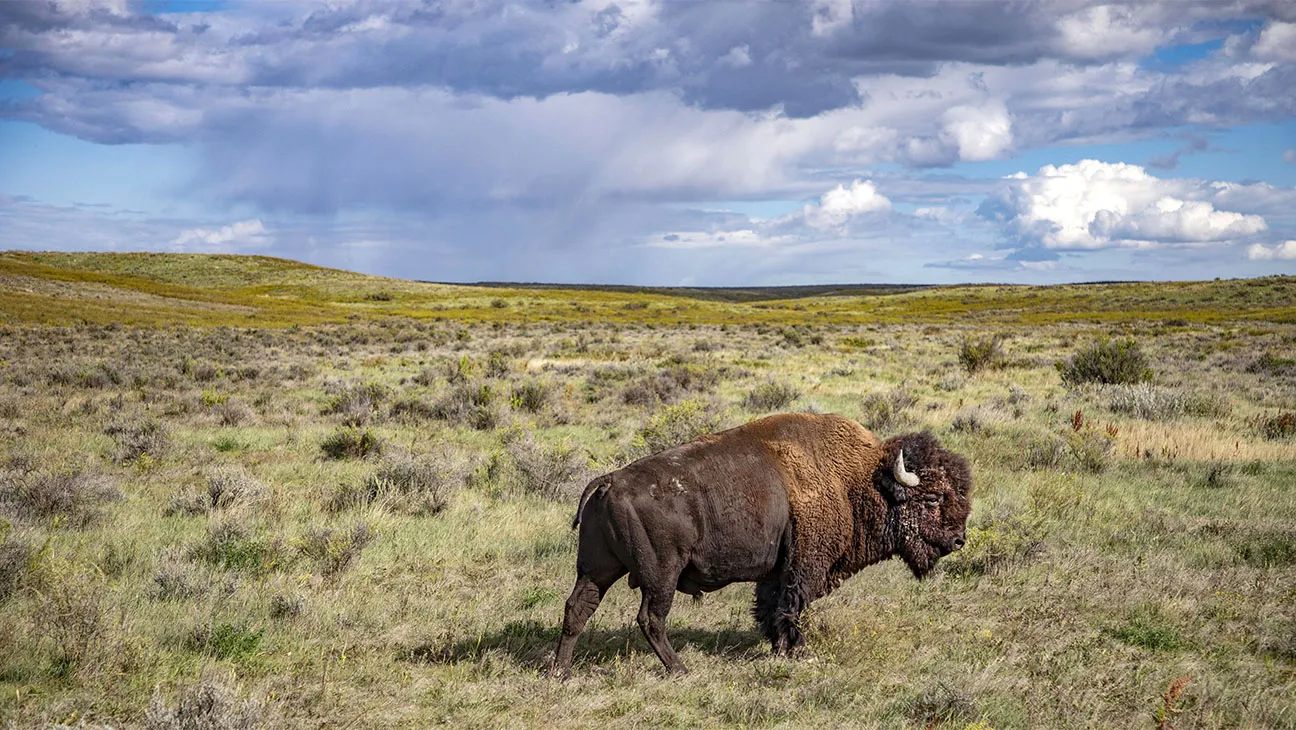
On October 8, the Hopkins Center for the Arts hosted an advanced screening of the first part of Ken Burns’ latest documentary film, The American Buffalo, which went on to premiere October 16 on PBS. The event also featured a Q&A with the film’s producers Julianna Brannum and Julie Dunphy, the latter a member of Dartmouth’s Class of 1980. Ms. Dunphy has worked extensively with Ken Burns on his previous documentary projects. The event was hosted in conjunction with Dartmouth’s Department of Native American and Indigenous Studies.
Sydney Stowe, the Director of Film at the Hopkins Center, introduced the audience to the event and to Dunphy. Ms. Dunphy proceeded to explain the process by which the documentary reached fruition, including years of acquiring footage on many trips to the Western United States. Notably, she highlighted the contributions of Dartmouth’s very own Colin Calloway, Professor of History and Native American Studies, who sought to preserve the historical accuracy of the film. Dunphy noted that, in the course of producing the documentary, she was guided by Calloway’s writings, such as his First Peoples, a survey of American Indian history, and his One Vast Winter Count, a look into early Indian civilizations. Considering the work exerted by both Dunphy and Calloway, our College certainly left its mark on the project. Of course, the stories of Dartmouth and Native America are inextricably linked.
Dunphy also explained the political motivations behind the film, which include confronting a troubling past and the effects of capitalism and westward expansion. Amusingly, just one minute after her brief remarks, the documentary began with an accentuated sponsorship message from Bank of America. If the film is in fact an exposé of malevolent capitalism, it was only made possible by those institutions it seeks to condemn.
Overall, The American Buffalo is what you would expect from a Ken Burns documentary. From the narration featuring Peter Coyote’s distinct voice, to the music and story building, the film is characteristic of Burns’ vast catalogue. To be sure, Burns has a fascination with Americana themes. His more popular works include The Civil War, Baseball, The National Parks, Country Music, and The Dust Bowl. The American Buffalo adds another layer to Burns’ mission of nostalgia for America, for both its land and its people.
The American buffalo is a national icon of Western romanticism, but the documentary uses the animal as a vehicle through which to tell Native American history. The buffalo is, in fact, invoked to tell the stories of Indians’ relationship to the land, of rising modernity, and of colonization and westward expansion. The decline of the buffalo, the film submits, was a harbinger of the decline in Native American culture and the changing landscape that came with the emergence of the United States.
Particularly excellent about the film is its use of stellar artwork and photography, especially when accompanied by emotive stringed instruments. Old illustrations of buffalo and stunning shots of the Western landscape keep the story moving. Again, this is reminiscent of the American ethos that Burns attempts to capture.
The two-hour showing was of the first of two parts to be shown on PBS, with the theme of this one, according to Dunphy, being devastation and decline. Photographs of rotting buffalo corpses disturbingly make their way into many of the scenes. The documentary’s second part will purportedly offer solutions and a glimpse of hope for the recovery of buffalo populations. While much of this episode centered on Native peoples, the next will presumably focus on restoration efforts, more specifically in the contemporary period.
After the showing, a Q&A with Dunphy and Brannum was moderated by N. Bruce Duthu, Professor of Native American Studies. The producers explained that the project developed following increased academic scholarship and a renewed interest in the subject. They cited Interior Secretary Deb Haaland’s investment in buffalo population restoration as a sign of the public’s attention to the issue. For Dunphy and Brannum, the present offers the chance to “cede the narrative to different perspectives.”
One member of the audience was just as struck by the Bank of America sponsorship irony at the beginning of the film as I was. I had found it humorous, but she found it tragic. She asked how sponsors such as Bank of America can be held accountable, given their grave sin of engaging in capitalism (for some reason, this question was met with applause). Dunphy explained that she rationalizes working with climate change combatants because it transmits important stories to the televisions of millions of people.
Another person in the audience asked if there are fears among the production team about the documentary being banned in states like Florida and Texas. Of course, “banned” is the wrong term to use. It could, for some unknown reason, be prohibited from use in schools—not banned outright. This individual commented that he thinks The American Buffalo “will make the white kids feel guilty.” Both producers expressed concerns about potential mass censorship of a PBS documentary. Brannum maturely added that important educational programs lose funding in Oklahoma “because of our jerk governor.”
In spite of the audience’s extremely political questions during the Q&A, The American Buffalo itself was considerably interesting. It is a good documentary, and I’m happy Ms. Dunphy and Professor Calloway were involved in its production. I recommend that you watch it, just not with cynics as I did.

Be the first to comment on "Review Reviews: The American Buffalo"